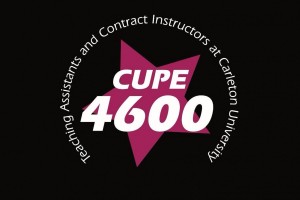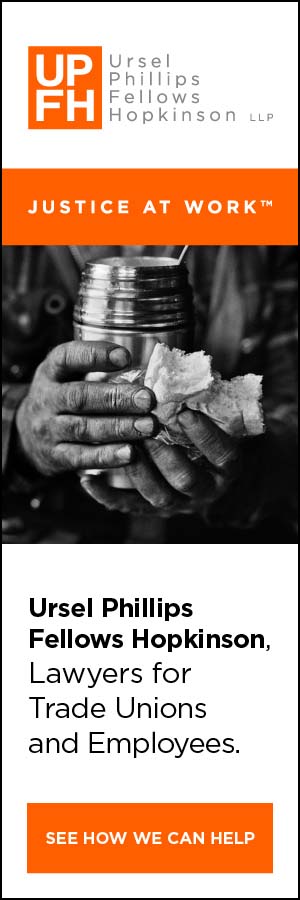Now you and I know that the things that aren't code
could be fixed with relative ease.
But we never did get anything by asking on our knees.
So now we're looking you straight in the eye.
Shoulder to shoulder and side by side.
We're saying we just come to work here . . .
we don't come to die.
We're saying we just come to work here MISTER!
We don't come to die.
— Harry Stamper
Google "mill fires in British Columbia" and the frequency with which fires plague the province's lumber industry comes to light. Of the numerous reports of fires in mills on Vancouver Island, in the Fraser Valley and in the BC Interior, two feature most prominently: the 2012 fiery explosions of the Babine Forest Products mill in Burns Lake and the Lakeland Mills sawmill in Prince George. Two men died in each blast; more than 40 workers were injured. And people are demanding to know why.
"It was a war zone," says Lakeland Mills worker Bruce Germyn, recalling the night of April 23, 2012, when the mill exploded and an inferno erupted, sweeping through the site. What Germyn remembers is the chaos of fire and smoke, sirens, emergency personnel, and workers who had survived but were suffering from horrible burns and smoke inhalation, crying out for help.
WorkSafeBC's report of its investigation describes the mill's northern baghouse erupting in flames and lunchroom walls collapsing on workers, while others were "blown through the south wall by the force of the explosion." The entire mill caught fire and was destroyed. Two workers died; 22 were injured.
The investigating officer found the accident could have been prevented. "Preventing a wood dust explosion involves removing one of the five components that need to be available for the explosion to occur: oxygen, containment, dust as fuel, dispersion of dust, and ignition. Oxygen is in the air but the other four components can be controlled."
That was the problem. Contrary to safety regulations, highly combustible wood dust had not been controlled.
WORKERS WARNED SUPERVISORS
Just three months prior, on January 20, 2012, a similar blast had levelled the Babine Forest Products mill near Burns Lake, BC, a few hundred kilometres west of Prince George. A spark from a broken fan ignited the wood dust, setting off an explosion and fire.
It was what a Global News report called "the first known explosion of this magnitude, ever, in Canada's sawmills industry." The toll was similar: two workers were killed and 20 others injured, most with serious burns.
Even prior to the Babine explosion, Germyn and his co-workers at Lakeland Mills had been warning their own supervisors, managers and mill owners that the amount of wood dust being allowed to accumulate in the sawmill was a hazard. Though small fires were not unheard of in the mill, workers were becoming nervous. Germyn says management did not take the concerns seriously.
"The day before Babine blew up, we had a fireball on our head rig that lit the air on fire. I said that day we were one machine away from blowing up. And, after Babine, I was telling everyone, 'We're going to blow up like them,'" he says.
Germyn's prediction came true. With two mill explosions in such a short period of time, both with fatalities, people began to ask hard questions. First, why did this happen?
REGULATIONS NOT ENFORCED
WorkSafeBC's investigation acknowledges that the agency itself did not enforce the combustible dust provision. This is the provincial agency tasked with enforcing the Occupational Health and Safety Regulation of British Columbia and with carrying out workplace inspections. It is responsible for accident prevention. Why did it not enforce the regulations? Why were mills allowed to operate in contravention of those regulations? Did mill management and WorkSafeBC inspectors know wood dust was combustible and, if not, despite all the information available, why not?
"A decision was made not to enforce the dust-level regulations," says Steve Hunt, District 3 director with the United Steelworkers, which represents the workers. "Who gives WorkSafe the authority to decide which regulations to enforce? Someone should be held responsible and that's the smoking gun. Workers have a right to know that when they go to work they'll be safe. WorkSafe is an agency that is supposed to support workers but chose not to."
Germyn says the mill was never designed for operating three shifts. And it was never designed to deal with the volume of wood going through it prior to the blast. Germyn worked at the Lakeland Mills sawmill for six years.
"In the first three years, I don't remember anything major other than small fires that you step on (to put out), but the last three years we had several burnings going on because there was so much fuel. They weren't maintaining it."
WorksafeBC's investigation says Lakeland management had known for some time the dust collection system was undersized, wood waste was not adequately removed, and supervisors were not supervising. Managers should have known from previous fires that accumulated dust was dangerous, says the report. Sinclair Group, which owns the mill, says they "couldn't have known" and were not told by WorkSafeBC inspectors.
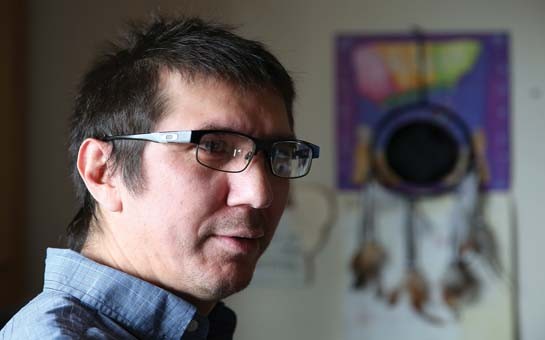
Sawmill worker Bruce Germyn was on shift the night of the Lakeland Mills explosion in Prince George, BC. He still suffers from PTSD (Post Traumatic Stress Disorder) and memory loss. PHOTOGRAPH: COURTESY THE PRINCE GEORGE CITIZEN (JAMES DOYLE)
When Germyn clocked in to work on that April afternoon, he immediately noticed the high accumulations of wood dust. He recalls, "Walking in there, I see a huge pile below the stacker, the feed chains, and there was huge sawdust piles throughout the basement.
"This was Monday and the mill had started up 5 p.m. Sunday night," he says. It had been running steadily 24 hours. "We started at 4:30 and started running it until the night shift, so it ran 30 hours-plus straight without housekeeping, and that's a lot of fuel in there — too much fuel."
Around 9:30 p.m. that night, Germyn was standing by the edger line, waiting for a supervisor to clear a jam-up.
"Suddenly there was a loud bang and the whole building shook. Wood dust began coming down from overhead like curtains. There was a 50-foot wall of fire sweeping through the curtains of sawdust."
Germyn was thrown 30 feet, onto a pile of burning debris. Then he began crawling underneath machinery to try and escape. "It was like a movie," he remembers. "I thought I wasn't going to get out, but I just wanted to get to where they would find me."
I WAS UNRECOGNIZABLE
Germyn hadn't realized his own face was badly burned until someone grabbed a five gallon pail of water and poured it over his head. "I was unrecognizable. My doctor actually passed me in the hospital and it was only when someone said my name, he turned back." Germyn received second degree (almost third degree) burns to his face, he says, but these were only the most visible of his injuries.
He was fortunate. The burns healed without needing skin grafts. For this, Germyn credits hours and hours of healing touch for the amazing recovery. Still, three years later, he continues to struggle with hearing loss, a numb "pin-cushion" face, burning sensations and tingling ears. He also suffers from headaches and severe post-traumatic stress disorder (PTSD).
Germyn says, "The fact that two mills blew up in three and a half months, both preventable and the same scenario, means something seriously went wrong. There were too many systems that failed. WorkSafeBC, the BC Safety Authority — everybody had a responsibility to do something, and they didn't. It was a preventable accident that no one prevented."
The other hard question that must be asked is why is no one being held accountable? Four workers were killed and more than 40 injured, but there have been no charges laid and no prosecutions, despite evidence that unsafe working conditions caused the deaths and casualties.
There has been no shortage of investigations: The police investigated. The BC Safety Authority, an independent organization created by the Province in 2004, investigated. And WorkSafeBC began its investigations into the Babine mill fire as it would for any workplace accident. As work progressed, the agency discovered evidence that led them to hand the file to the B.C. Criminal Justice Branch along with a recommendation that criminal charges be laid against both management and the employers.
FLAWED INVESTIGATIONS
But fingers have been pointed at WorkSafeBC, not only for failing to enforce safe standards that would have prevented the mill explosions, but also for mishandling their own investigations and, in doing so, destroying any possibility of criminal prosecution.
The Steelworkers' Steve Hunt says, "These were two of the biggest investigations in its history and it botched them. They were unable to produce evidence that could result in any legal action." Because the RCMP and the BC Safety Authority relied on WorkSafeBC's information, both their reports were flawed as a result, he says.
Two years after the fires, in 2014, the Criminal Justice Branch announced no regulatory charges would be laid against the owners of either mill, due to an insufficient likelihood of conviction. In a CBC report, Provincial Crown counsel spokesperson Neil MacKenzie says WorkSafeBC did not follow the rules for conducting a criminal investigation, therefore much of the evidence it had collected would likely be thrown out.
For example, the Criminal Justice Branch says WorkSafeBC investigators failed to inform witnesses of their Charter rights before taking statements and obtaining search warrants. While "warrantless seizures" of property are allowed when determining the cause of a workplace health or safety incident, different rules apply when evidence is collected for trial.
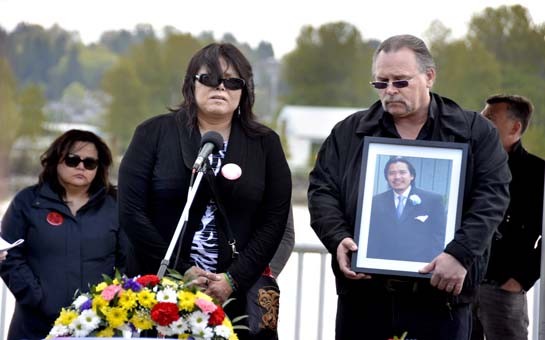
The Babine Forest Products sawmill in Burns Lake, BC, exploded on January 20, 2012. Two workers died and 19 were injured. Lucy Campbell (centre) is the sister of Carl Charlie, one of the two workers who were killed. PHOTOGRAPH: JOSHUA BERSON
The Criminal Justice Branch said company management and the owners had a solid defence, since, during inspections just weeks before, WorkSafeBC had failed to notify them of the dangers. Because they would be unable to prove the charges or to effectively counter a defence of due diligence by the owners, the Criminal Justice Branch felt any chance of a successful prosecution had already been scuttled.
Jeff Dolan, director of investigations at WorkSafeBC, told the Globe and Mail's Justine Hunter that "Crown counsel approved charges in 31 cases investigated by WorkSafeBC between 1996 and 2010, 24 of which resulted in a conviction." Yet, in the cases of the mill fires, the Crown ruled out charges because of WorkSafeBC's "faulty" investigation.
"It's very significant," said Dolan. "We have concluded large investigations using the same investigative methodology, and they have approved charges in other cases. In the decision of Babine, the authority we had worked under would now, for the first time, render our evidence inadmissible."
Following the Criminal Justice Branch's decision not to lay criminal charges in the Babine mill explosion, BC Premier Christy Clark directed Deputy Minister John Dyble to review the handling of the file. In his report, Dyble is highly critical of the agency, saying, "WorkSafeBC had been warned for years its investigative methods might prompt Charter concerns but did not change its practices."
Dyble's report acknowledges the WorkSafeBC investigation into the Babine fire was "a massive undertaking" but notes their internal and external experts did not agree on the cause. There was no definitive conclusion, only "likely cause," as to why the hazardous build-up of sawdust exploded. Dyble adds, "When the agency later concluded that the deaths were preventable, it blamed Babine's owners for not detecting the risk that its own officers had not identified."
THIN AS A DIME
The report says when WorkSafeBC officers visited the Babine mill, excessive wood dust was flagged as an air quality issue, but nothing was said about the potential for an explosion.
According to an April 2, 2014, Globe and Mail article, WorkSafeBC held a workshop in March 2010 that was attended by its own prevention officers, on the dangers of combustible dust. There the officers were told "a layer of dust as thin as a dime" was dangerous, but they "failed to bring this information into the mills."
On February 6, 2012, two WorkSafeBC inspectors visited the Lakeland Mills sawmill and reported the airborne concentration of wood dust was below the exposure limit for respiratory concerns. They did not report that it was above the hazardous thin-as-a-dime level.
"Yet WorkSafe did not issue any orders," said Adrian Dix, NDP MLA for Vancouver-Kingsway riding. Dix was speaking in the Legislature about proposed amendments to the Workers Compensation Act. "They merely provided for the employer's reference the text of regulation 4.41: 'Refuse spills and waste material must not be allowed to accumulate so as to constitute a hazard.' They could have issued a stop-work order. They could have imposed a fine. They could have prosecuted for the violations in occupational health and safety regulations. They did none of those."
"There are parallels between this and the Westray disaster," says Hunt. "The similarities are shocking. Regulators weren't enforcing the laws and inspectors had push-back from the industry not to enforce them."
NO COMPANIES CONVICTED
On May 9, 1992, 26 miners died in a methane and coal dust explosion at Nova Scotia's Westray Mine. A public inquiry firmly blamed mine owners, managers, provincial bureaucrats, and politicians for flagrantly disregarding worker safety. It also determined the province's Department of Labour failed to enforce safety regulations. Yet, due to existing laws, none of the company executives or supervisors faced charges for the deaths.
After intense lobbying by unions, workers and the Westray Families Group, Parliament unanimously passed the Westray Bill in 2004. An amendment to the Criminal Code of Canada, Bill C-45 says "Every one who undertakes, or has the authority, to direct how another person does work or performs a task is under a legal duty to take reasonable steps to prevent bodily harm to that person, or any other person, arising from that work or task."
The Steelworkers' health and safety director Gerry Leblanc says, "It's been in place for 10 years and we've seen no companies convicted under the law. Fewer than 10 charges have been laid but everything is either plea-bargained down or results in fines. We want to raise awareness to put pressure on people to implement the law."
In a letter to federal Justice Minister Peter MacKay on July 10, 2014, the executive director of the Canadian Criminal Justice Association (CCJA) calls for better enforcement of the Westray Act. "Research has shown that these amendments are rarely applied to cases of workplace accidents and deaths and that the potential influences of neglect, corporate mismanagement and disregard for health and safety regulations are not often considered." The CCJA wants better training and awareness around how to apply the law to "workplace accidents and fatalities caused by criminal negligence or failing to take reasonable steps to prevent bodily harm."
The coroner's inquest into the Lakeland sawmill explosion released its recommendations mid-May. An inquest into the Babine mill disaster is expected to begin in July. While the Steelworkers withdrew its own legal representation at the Lakeland inquest, claiming the union had lost confidence that the inquest would truly provide answers, in a press release, the union did thank the Lakeland jury for their hard work and for affirming the rights of workers, including the right to refuse unsafe work.
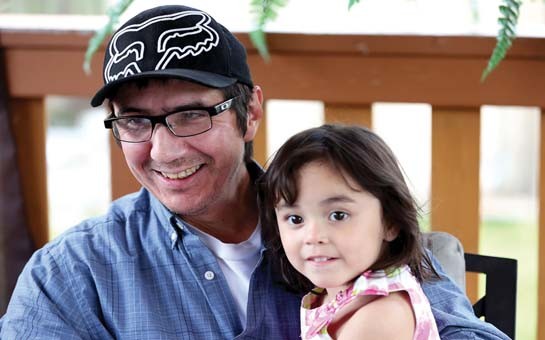
“I thought I wasn’t going to get out but I just wanted to get to where they would find me,” says sawmill worker Bruce Germyn of the night the mill exploded. He is happy to be alive, enjoying being a grandfather to his granddaughter, Hailey Nelson. PHOTOGR
Still, justice has not been done. Workers, their families and the Steelworkers, which is representing the mill workers, want a full-scale independent public inquiry but this option was previously rejected by the BC government. Labour Minister Shirley Bond said recent changes to the way WorkSafeBC operates should ensure the situation will not be repeated. "We can't go back," she said. "We need to move forward."
Says Hunt, "We said at the time, an inquest is too limited in scope. It's about who died, how, why, and by what means; but it doesn't answer what happened prior and it only talks about fatalities, not injuries, and what could have been done to prevent the accident."
In the end, WorkSafeBC was unable to see charges laid against the companies. No one has been prosecuted for the four deaths and the many injuries. WorkSafeBC was able only to levy fines against the owners of the two mills.
The owners of Babine Forest Products Ltd., Oregon-based Hampton Affiliates, were found responsible for a preventable incident and fined $1.1 million, the highest penalty ever issued and the maximum allowable under WorkSafeBC rules. Mill owners say government inspectors never alerted them to the risk of dust explosions. They are appealing the penalty.
Sinclair Group, the owner of Lakeland Mills, received a total fine of $724,000. The company argues the sawdust-related explosion was a previously unrecognized hazard, and the president, Greg Stewart, contends the company made diligent attempts to learn about hazards. They are also appealing.
Meanwhile, the Steelworkers has created an online petition to solicit support for a public inquiry into the mill explosions, and health and safety director Leblanc says, "We're trying to pressure the police to look at the case again."
In the words of the Steelworkers' petition, "It is now clear that only a public inquiry into both sawmill explosions will provide the answers that everyone affected by this horrific event deserves."
Carole Pearson is a Victoria-based freelance writer who specializes in labour, human rights and the environment.



